What is Botan Nabe?
Botan nabe is a Japanese hot pot dish consisting of wild boar meat, and seasonal vegetables simmered in a broth made with a combination of white and red miso paste. The sweetness of the white miso and the richness of the red miso perfectly compliments the unique flavor of wild boar.
Botan nabe is basically the same as shishi-nabe (boar stew), the main difference being that the boar meat is arranged into the shape of a peony flower.
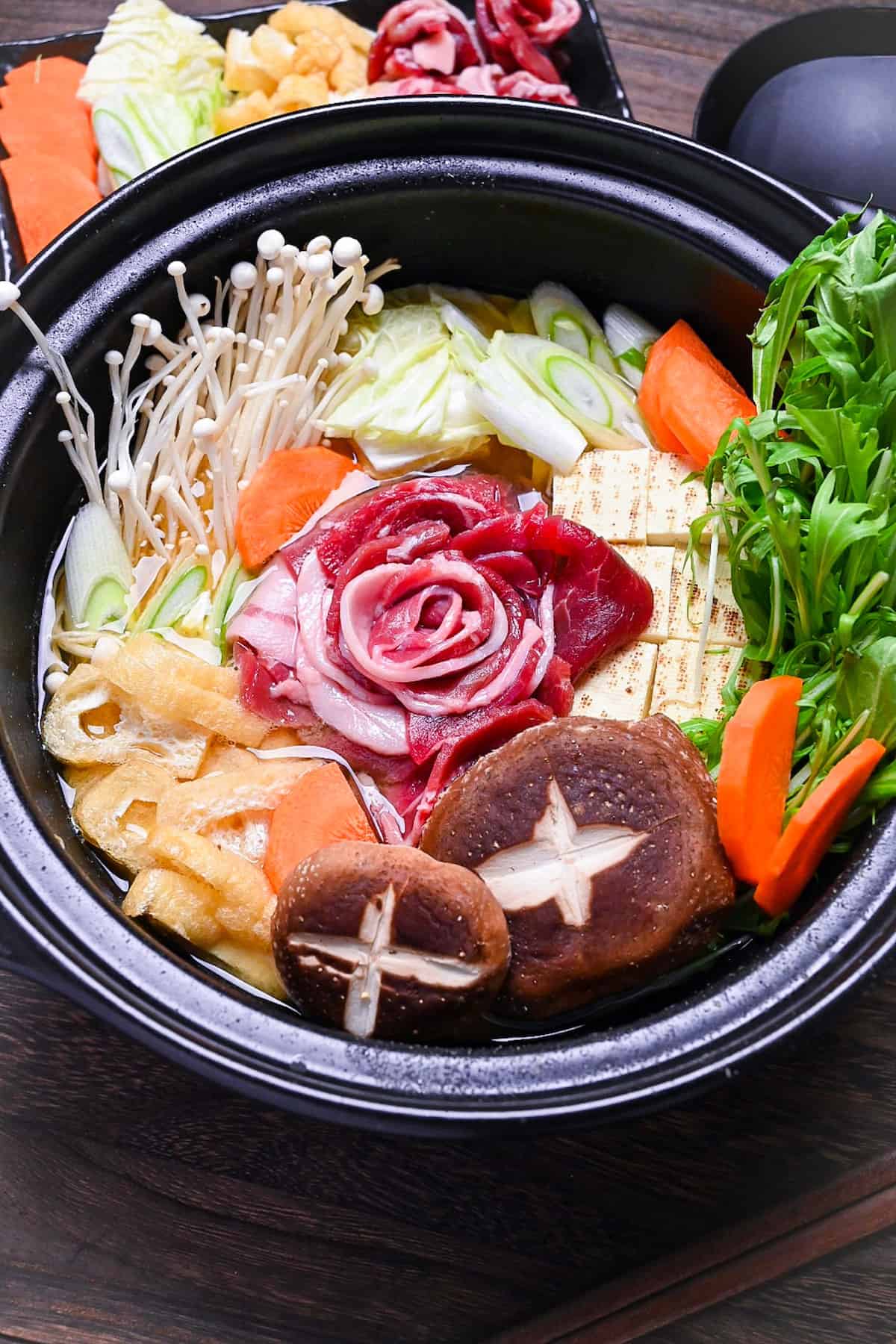
Visual Walkthrough & Tips
Here are my step-by-step instructions for how to make Botan Nabe at home. For ingredient quantities and simplified instructions, scroll down for the Printable Recipe Card below.
Add the dashi, sake, mirin, light brown sugar, and sesame paste to a large pot, mix, and bring it to a boil over medium heat. Allow it to boil for 1-2 minutes, then turn off the heat and add the white and red miso pastes.
To evenly incorporate the miso paste into the soup, I recommend placing it on a mesh spoon (or ladle) and breaking it down with a small whisk. Dip it in the hot soup to loosen it up and then whisk it in the mesh spoon until it’s fine enough to mix in with the rest of the soup.
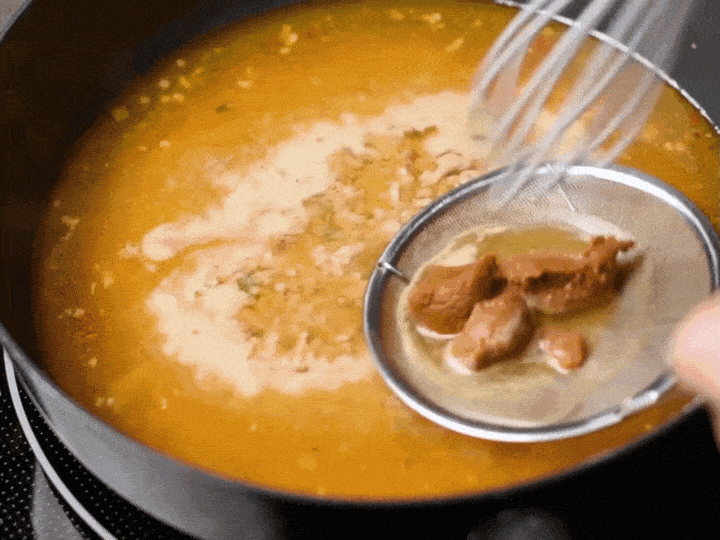
Once the miso paste has been added, it should look something like this:
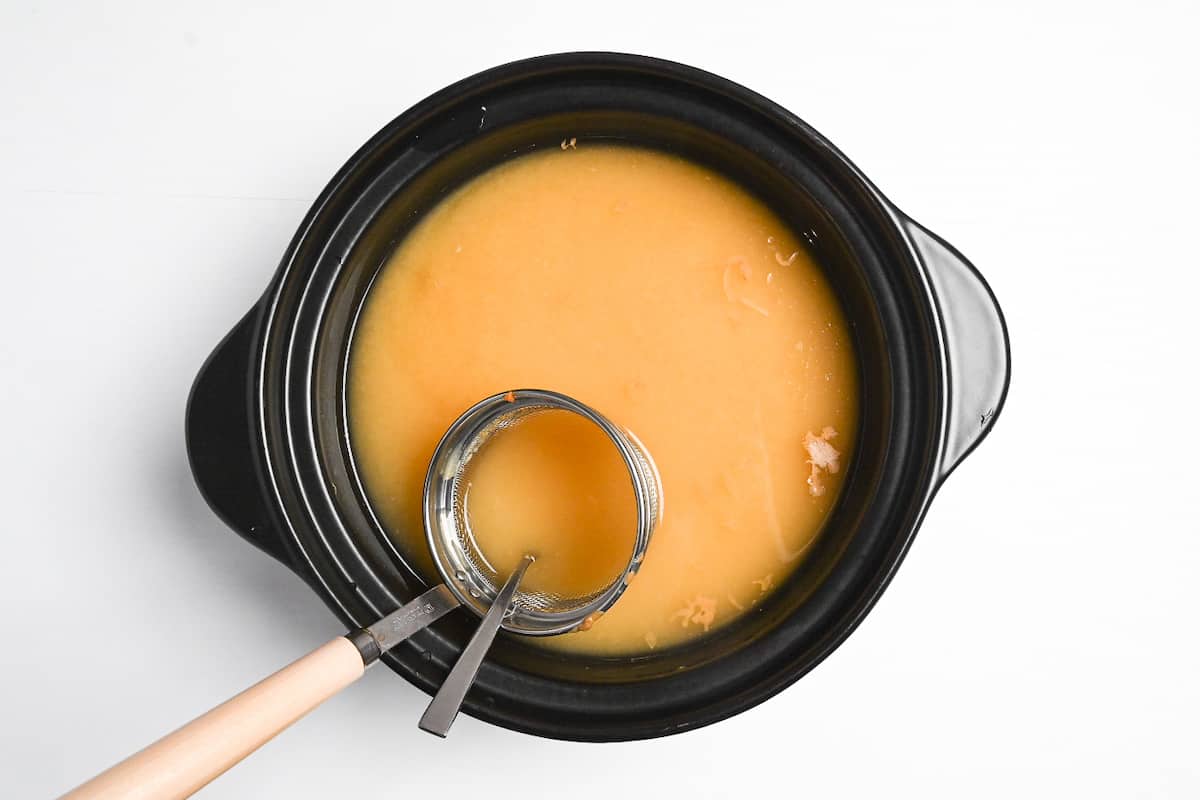
Botan nabe is known for its beautiful presentation, if you have guests you want to impress then you should definitely cut your ingredients with aesthetics in mind!
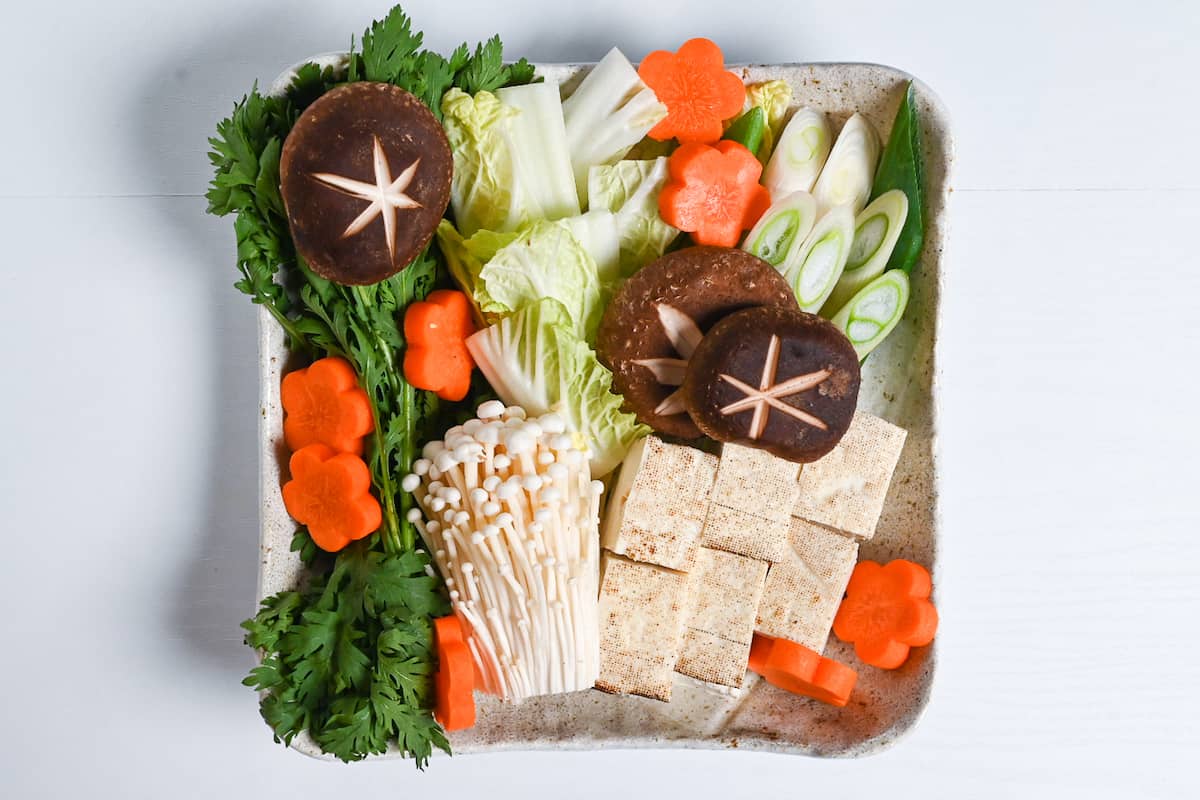
Here is a list of how I prepare my ingredients after washing (this is optional of course and just my suggestion, you can arrange them how you like!)
- Wild boar meat – rolled into a peony flower shape
- Firm tofu – cubed
- Napa cabbage (hakusai) – roughly cut
- Spring onion – diagonally sliced
- Japanese mustard greens (mizuna) – stems trimmed
- Carrot – peeled, sliced and halved (or cut using a decorative cutter)
- Enoki mushrooms – roots removed
- Shiitake mushrooms – stems trimmed and stars cut on top
- Twice fried tofu (aburaage) – sliced
Once your ingredients are prepared, arrange them in the pot with the broth.
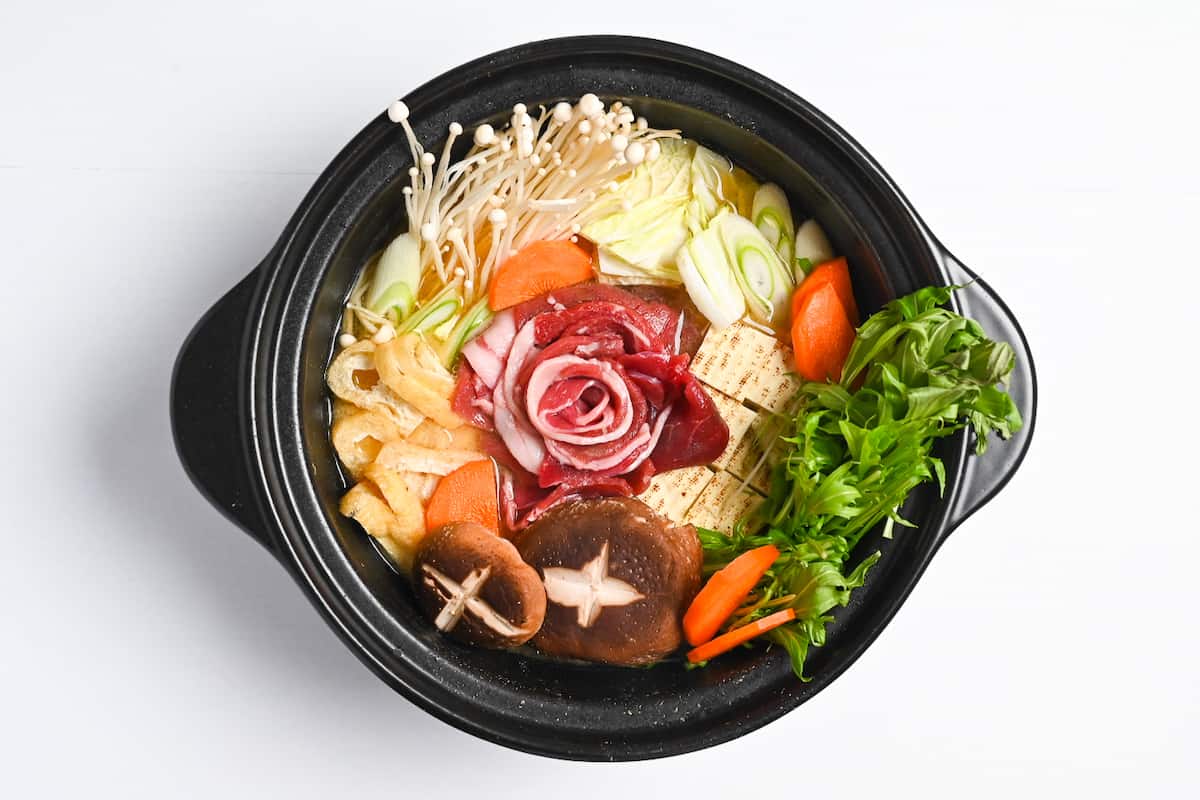
Once the ingredients are added, place the pot on the stove and bring to a simmer over a medium heat. Try to avoid letting the broth boil as this will weaken the flavour of the miso. Keep it just below boiling and simmer until all the ingredients are cooked through.
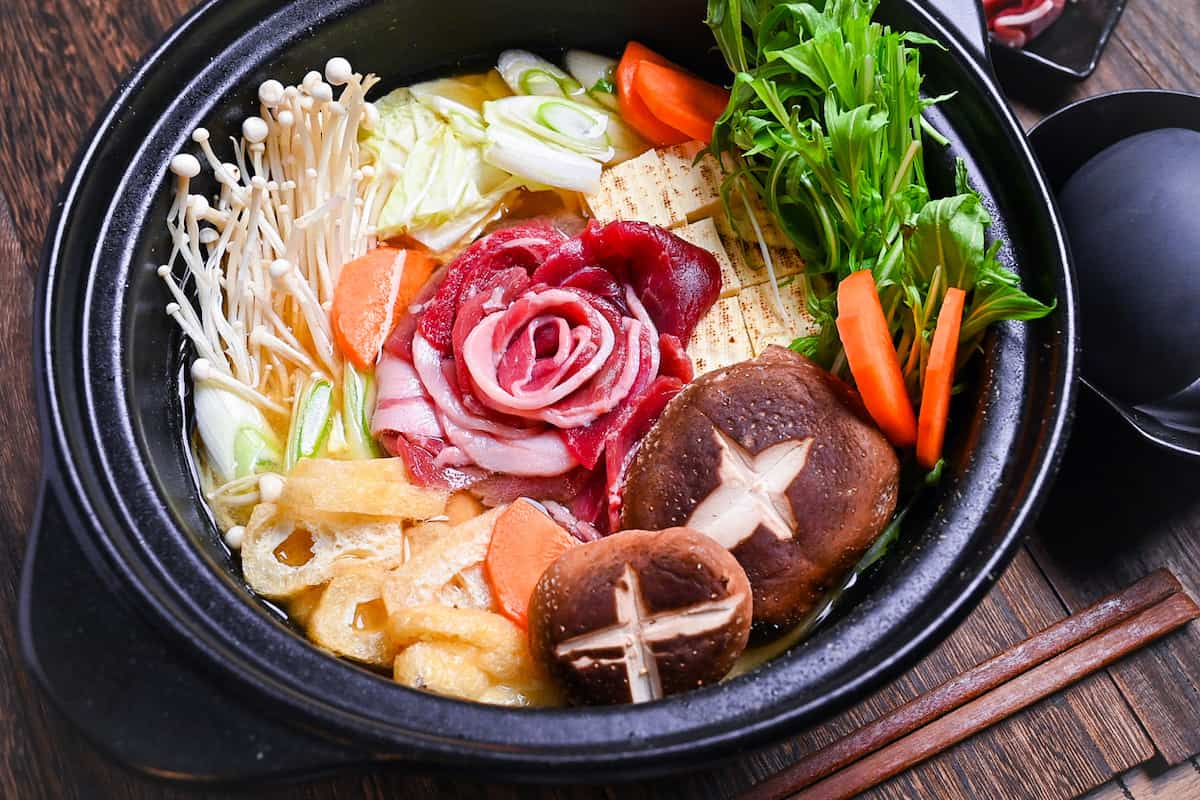
If possible, cook the botan nabe on a portable stove set in the middle of the table. This way you can eat it as it cooks. If you want to cook it in the kitchen and divide it into portions, I recommend adding the carrots first and cooking them for a few minutes longer before adding the other ingredients.
As with most hot pot dishes, there’s always leftover broth once all the ingredients are eaten. There’s no need to waste it! In Japan, it’s common to finish the broth with cooked noodles (I recommend udon or ramen noodles).
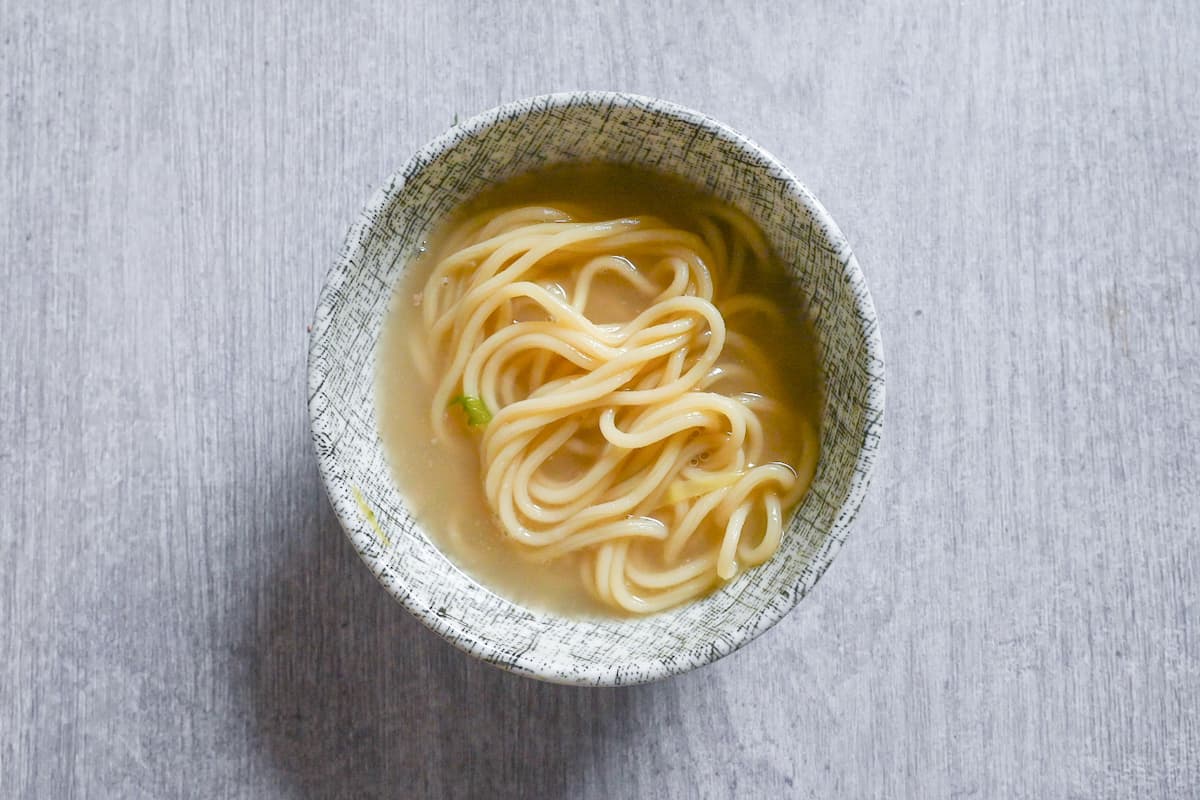
This is known as “shime” or “last course” in English. Just cook the noodles in a separate pot, then drain the water and serve them in the broth (cooking them in a separate pot prevents the broth from becoming starchy and thick).
I hope you enjoy this comforting rural dish from the mountainous regions of Japan!
Jump to Full Recipe MeasurementsFAQ
Botan nabe was born in Sasayama, Hyogo Prefecture, and is believed to have appeared after the meat ban was lifted during the Meiji Era (1868-1912). More precisely, it is said that around 1908, the 70th Infantry Regiment of the Army was stationed in Sasayama Town, and the meat of wild boar captured during training was put into miso soup and eaten, or brought to hotels (ryokan) and made into a hot pot (nabe) dish with miso paste.
Initially called “Ino-nabe,” it was not until 1931 that the name “botan-nabe” was coined. The name “botan nabe” is said to have come from the fact that when the wild boar meat is arranged on a plate, it looks like a peony flower (which is called botan in Japanese).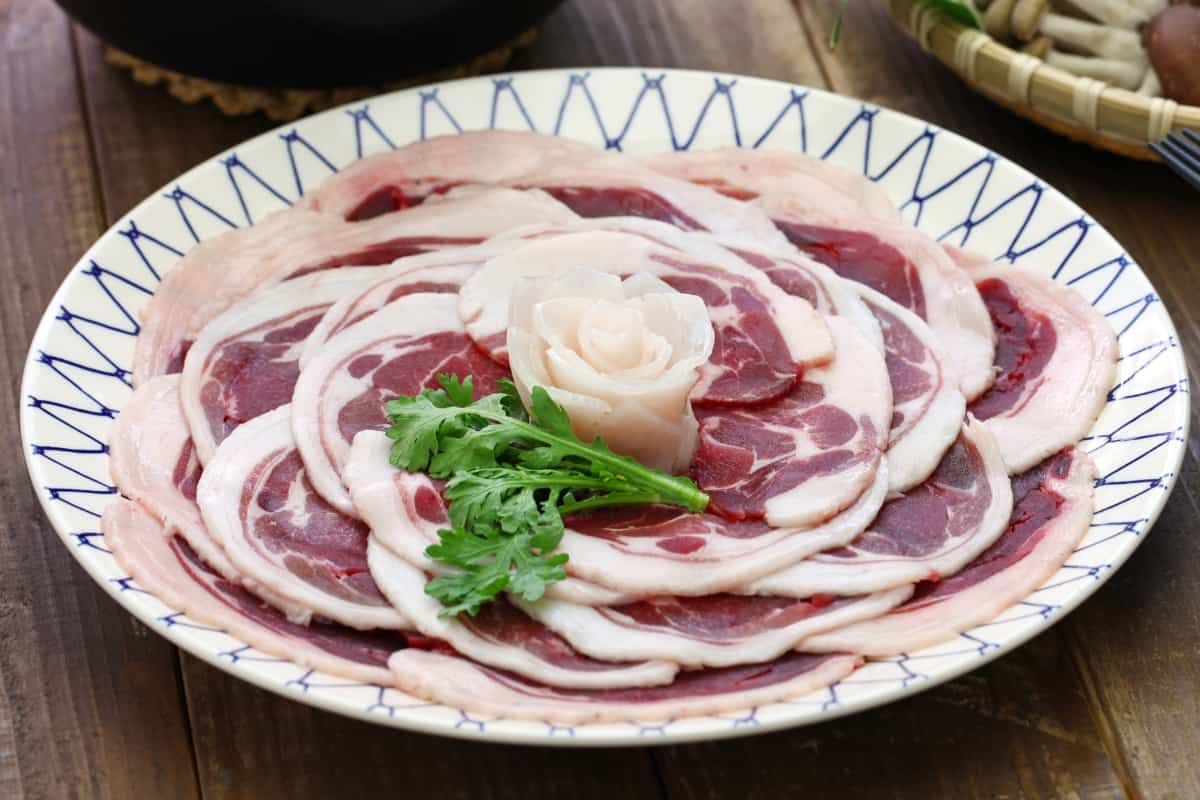
You might now be surprised that wild boar meat is used in Japanese cuisine, but it has a long history. Considering about 75% of Japan’s land area is mountainous, including volcanic and hilly areas, it is perhaps not so surprising that these areas have a history of eating the meat of mountain-dwelling animals such as wild boar and deer.
In Japan, wild boar meat has been eaten since as far back as the Jomon period (710-794 CE). Even when Buddhism was introduced and eating meat was banned, it was still called “yama-kujira (mountain whale)” and was eaten as a valuable source of protein in the remote areas in the mountains.
In modern times, they are rarely seen outside of mountainous areas, but have regained some popularity in recent years due to the gibier (game) restaurants boom.
Every year, I visit the momiji autumn leaves festival in a mountain not far from where I live. They have always have stands selling wild boar sausages, miso soup with boar and inoshishi nabe udon (just to name a few!). Butchers around the area sell general game meat including locally caught wild boar.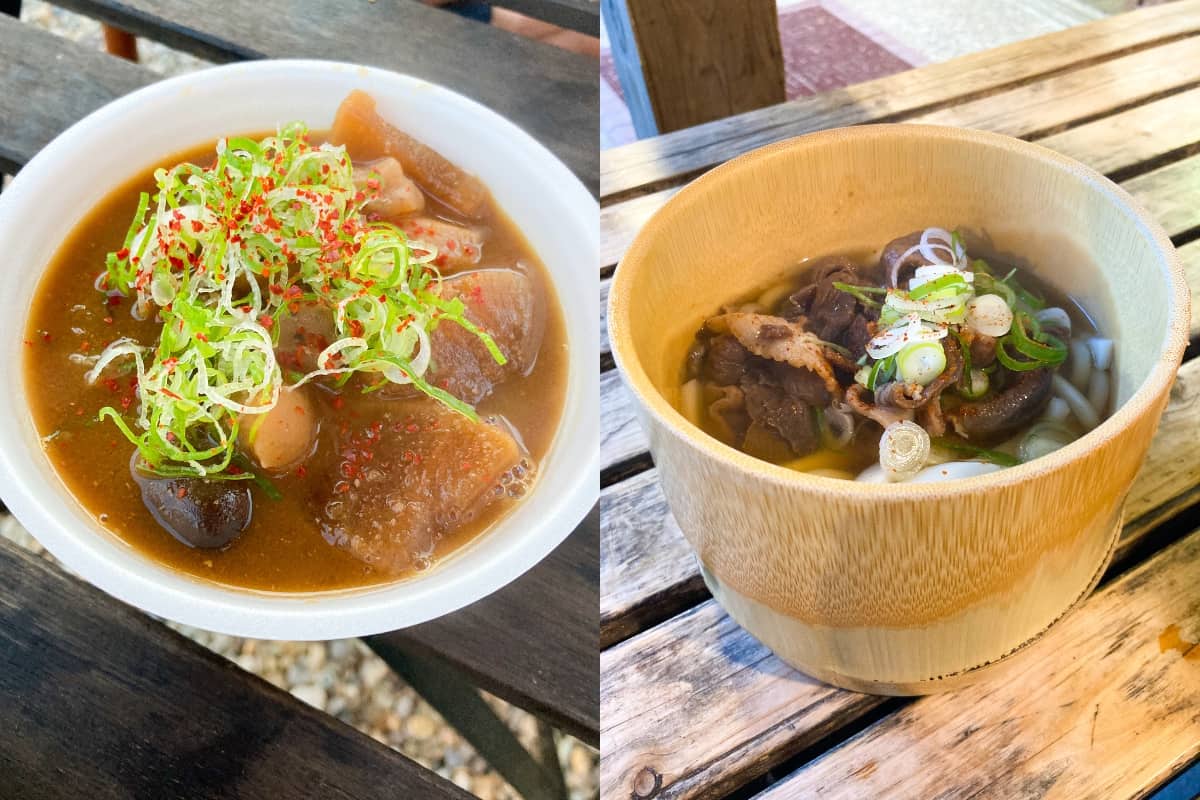
Unfortunately, at least in Japan, wild boar meat is not something we see in regular supermarkets. I bought mine online from Ishii Seinikuten, a butcher that specializes in wild boar meat. They sell meat, especially botan nabe (thinly sliced), as well as blocks and minced meat; if you’re in Japan, you can check out their website here.
Wherever you get your boar meat from, I do recommend getting it from a trusted source and using fatty loin or shoulder for the best results. It might be difficult to find it thinly sliced like we have here in Japan, but if you freeze a block until firm (not frozen), you can thinly slice it at home using a sharp knife.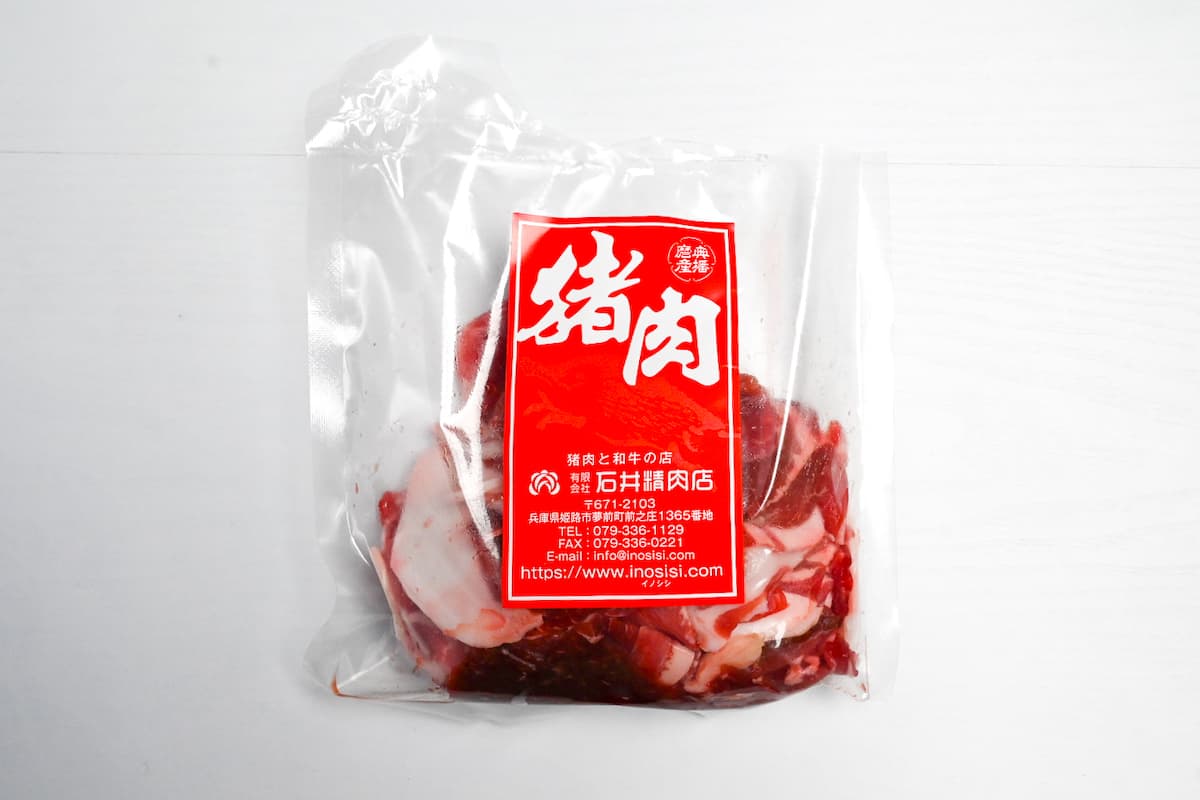
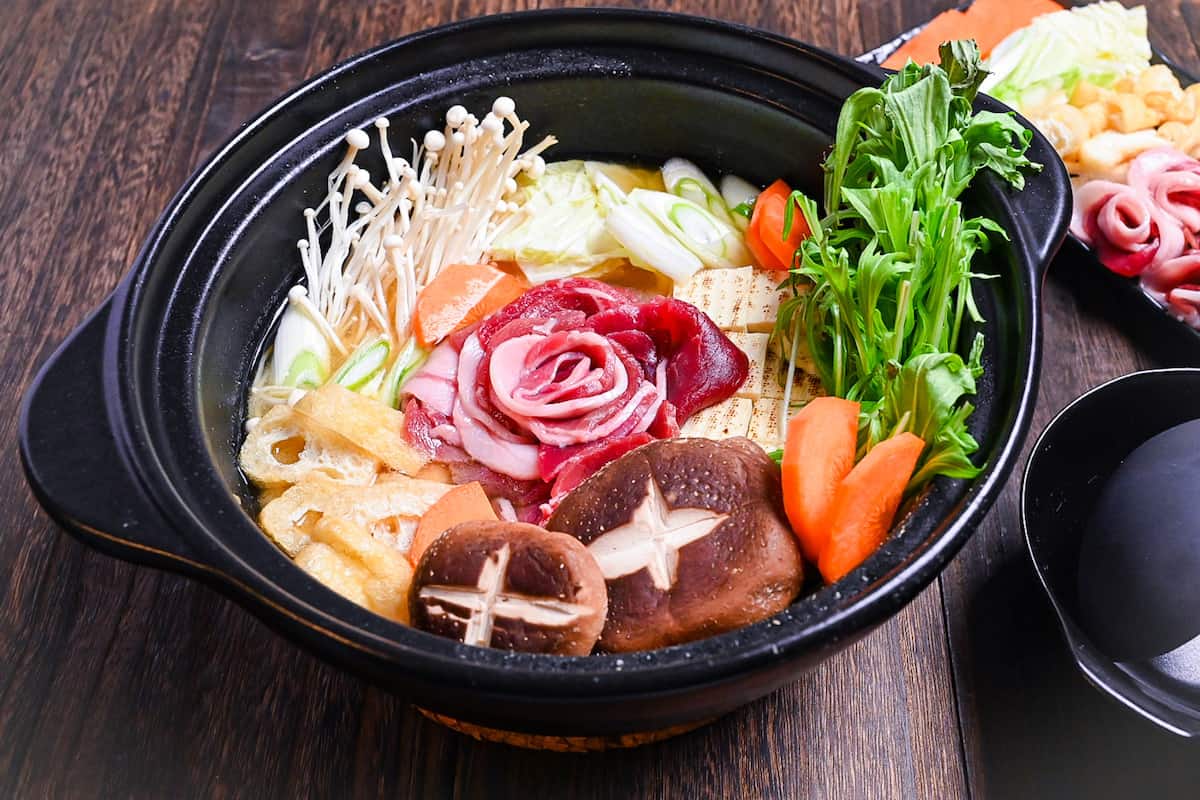
I hope you enjoy this Botan Nabe recipe! If you try it out, I’d really appreciate it if you could spare a moment to let me know what you thought by giving a review and star rating in the comments below. It’s also helpful to share any adjustments you made to the recipe with our other readers. Thank you!
More Japanese Hotpot Recipes
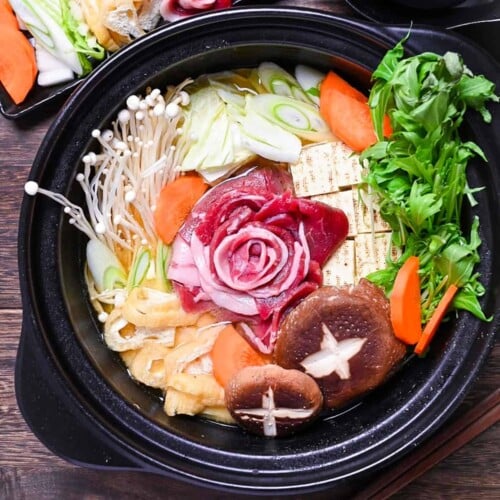
Botan Nabe (Japanese Wild Boar Hotpot)
Ingredients
Broth
- 800 ml dashi stock
- 5 tbsp sake
- 2 tbsp mirin
- 1 tbsp light brown sugar
- 1 tbsp sesame paste (nerigoma)
- 3 tbsp red miso paste
- 2 tbsp white miso paste
Hot pot ingredients
- 200 g wild boar loin thinly sliced
- 100 g firm tofu grilled if possible, cubed
- 100 g Napa cabbage hakusai, roughly cut
- 30 g Japanese leek (naganegi) white part, diagonally cut
- 50 g potherb mustard (mizuna) mizuna
- 50 g enoki mushrooms
- 50 g carrot peeled and sliced
- 30 g fresh shiitake mushroom
- 30 g fried tofu pouch (aburaage) aburaage, sliced
Toppings and “shime” (last course) optional
- 2 pinches Japanese sansho pepper sansho pepper
- 2 portions cooked ramen noodles or udon noodles, to finish the soup
My recommended brands of ingredients and seasonings can be found in my Japanese pantry guide.
Can’t find certain Japanese ingredients? See my substitution guide here.
Instructions
- Take a large pot and add 800 ml dashi stock, 5 tbsp sake, 2 tbsp mirin, 1 tbsp light brown sugar and 1 tbsp sesame paste (nerigoma). Bring it to a boil over a medium/medium-high heat and allow to bubble for 1-2 minutes. Turn off the heat.

- Place 3 tbsp red miso paste and 2 tbsp white miso paste pastes on a mesh spoon or ladle. Dip them in the broth and then whisk inside the spoon until fine enough to mix in with the rest of the broth.

- Cut the vegetables and tofu and arrange them beautifully in the pot with 200 g wild boar loin rolled into the shape of a peony flower placed in the middle.

- Return the pot to the stove and simmer over a medium heat until the vegetables are softened and the boar meat is cooked through. Eat as it cooks (or divide into bowls once everything is cooked). Sprinkle with sansho pepper to taste. Enjoy the leftover soup with cooked ramen or udon noodles.
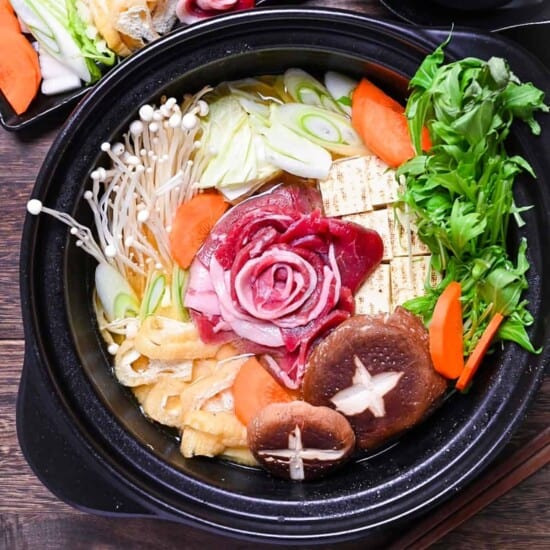


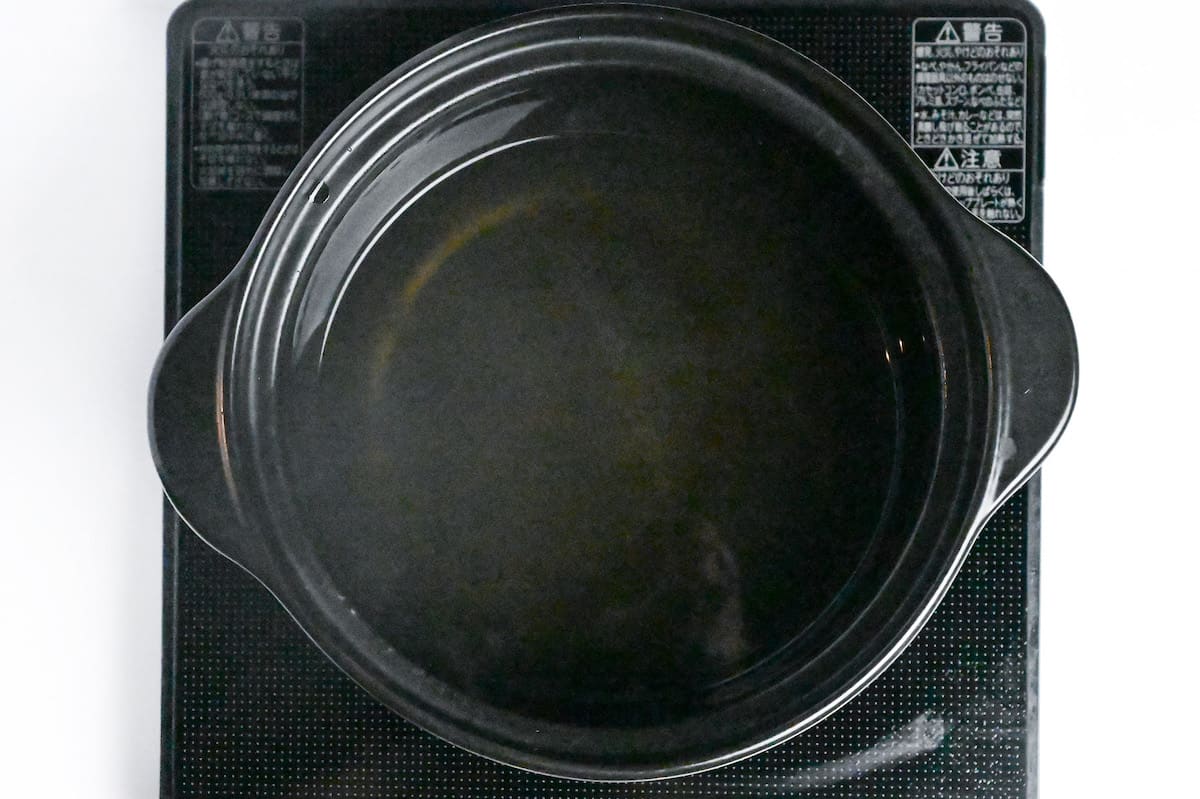
Leave a rating and a comment